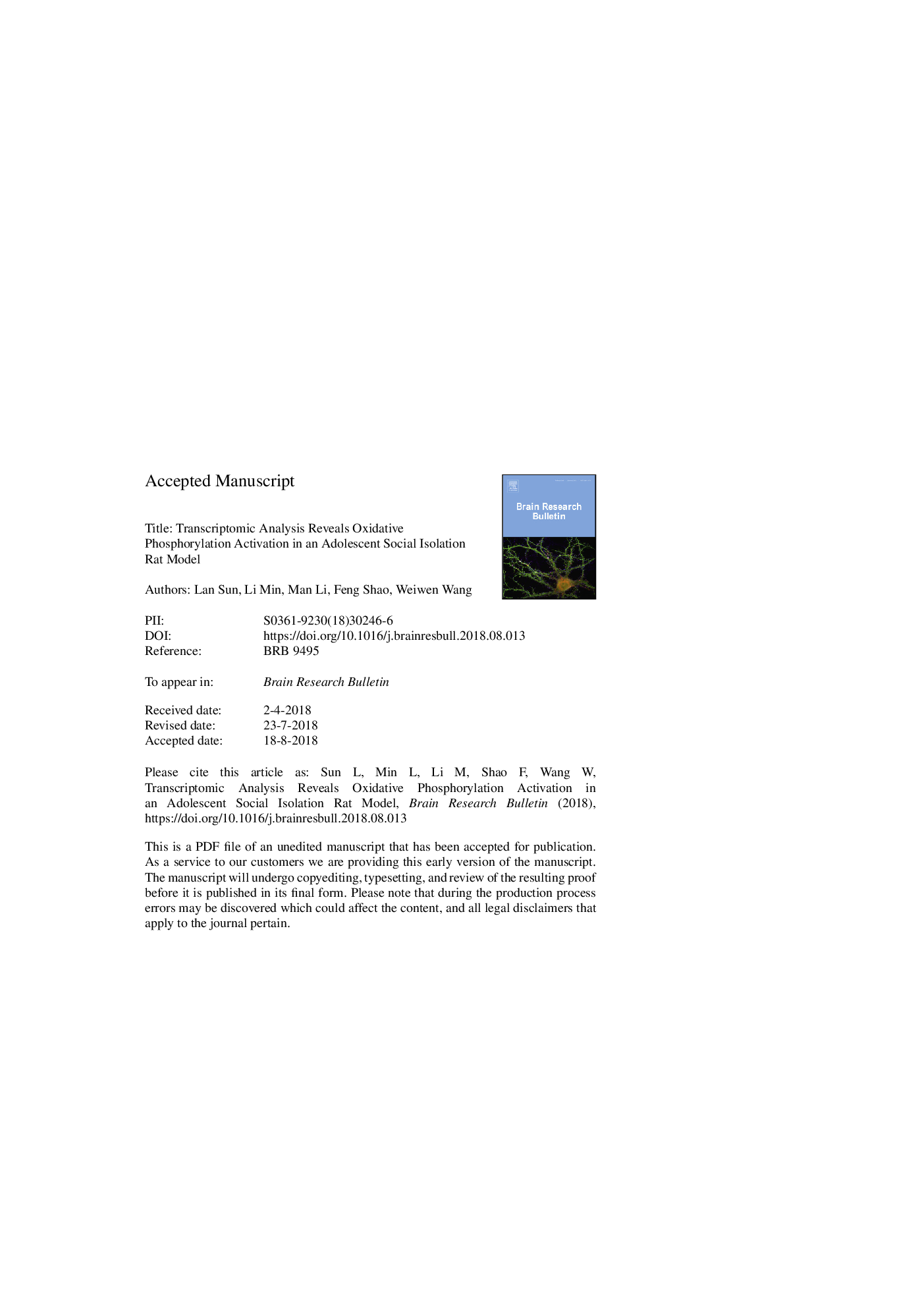| Article ID | Journal | Published Year | Pages | File Type |
|---|---|---|---|---|
| 8838812 | Brain Research Bulletin | 2018 | 25 Pages |
Abstract
Complex interactions between genetic and environmental factors exert a sustained influence on the pathogenesis of schizophrenia (SCZ). Adolescent social isolation is regarded as a typical paradigm for SCZ. However, the underlying pathological mechanisms are not fully understood. In this study, adolescent Sprague-Dawley (SD) rats were placed in isolation rearing (IR) or social rearing (SR) conditions from postnatal day (PND) 21 to 34 to establish a SCZ disease model and a control model, respectively. Prepulse inhibition (PPI) assays and elevated plus maze tests were performed on PND 56. Next, prefrontal cortex (PFC) tissues were isolated for transcriptomic sequencing and RT-qPCR analyses. The results indicated that adolescent social isolation induced anxious behaviors and disrupted PPIs as well as specific PFC gene expression patterns in adult SD rats. A total of 196 genes were identified as upregulated, and 748 genes were identified as down-regulated in the IR group compared with those in the SR group. Differentially expressed genes (DEGs) were highly enriched in the KEGG pathways associated with the comorbidity of neurological disorder and oxidative phosphorylation (OXPHOS); 26 out of 27 comorbid neurological disorder-associated DEGs overlapped with 31 OXPHOS-associated DEGs. Those 26 overlapping DEGs were all upregulated in the IR group and could easily distinguish the IR group from the SR group; 6 of these DEGs (COX7C, NDUFB11, NDUFA2, NDUFC2, ATP5C1, and COX6A1) were verified by RT-qPCR. Here, we provide a systematic overview of gene expression alterations in adolescent-social-isolation-induced SCZ (ASI-SCZ), which suggests that genes that are associated with the comorbidity of neurological disorders, especially OXPHOS-related genes, contribute to the pathogenesis of ASI-SCZ.
Keywords
Related Topics
Life Sciences
Neuroscience
Cellular and Molecular Neuroscience
Authors
Lan Sun, Li Min, Man Li, Feng Shao, Weiwen Wang,
